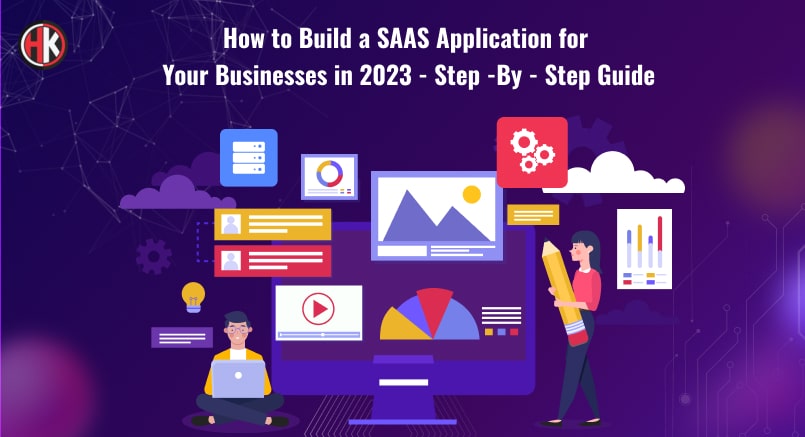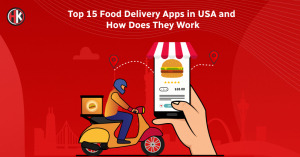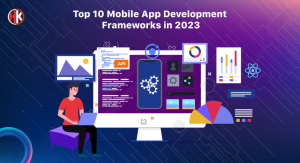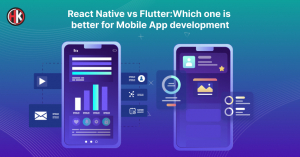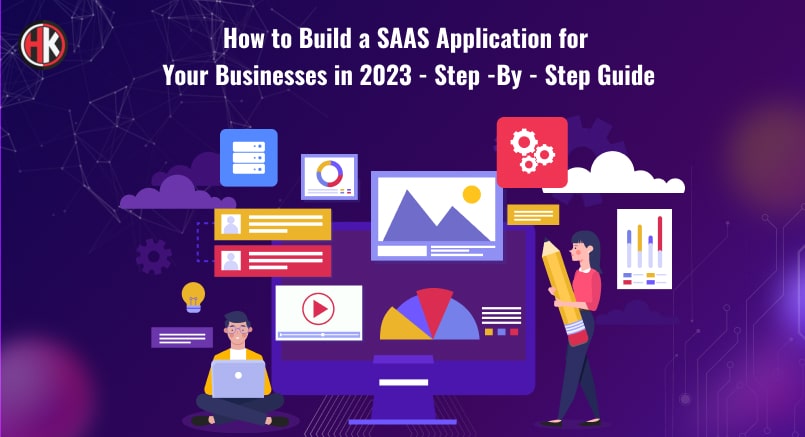
Have you ever wondered how far the application software will come in 10 years? Would it just be a memory if we were to look back? Well, it won’t be. The software industry has been rapidly growing and the future of software is promising. One such software invention is the SaaS application which has grown to dominate this universe.
Various businesses/employees or entrepreneurs heavily use these applications. The best example of this product is the Zoom app which has become an important tool for online workspace and meetings.
Many more such SaaS apps can be built or used to enhance the performance of your business or project management. But how are these SaaS apps built? And who can build them for you? In this article, let’s discover how to build a SAAS application for a business in 2023.
Table of Contents
What is a SaaS Application?
Building a SAAS product for your business is the best option that you can use to help your business grow. It helps you to focus your time and energy in the right direction. It also helps you to build a valuable asset for the future. As technology advances, so does the way businesses interact with their customers.
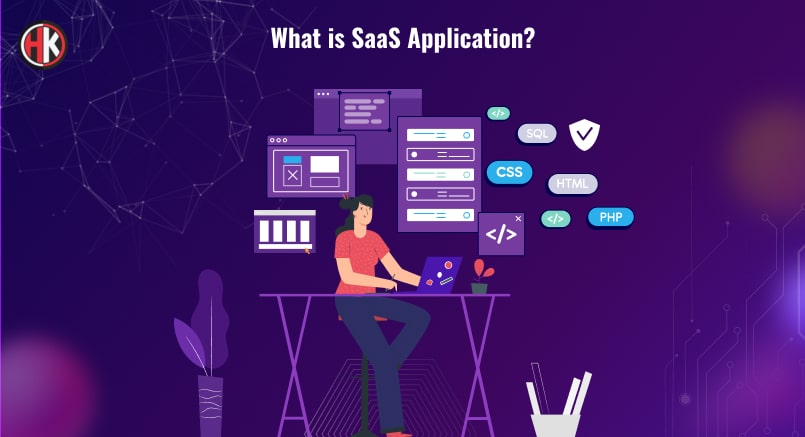
SaaS is a software-as-a-service delivery model. It is software offered by the provider on the web. Customers can access and use the software, typically through a web browser, while the provider manages their infrastructure and security.
SaaS applications are designed to be easy to use and are typically subscription-based, so customers can sign up and pay for only what they need.
Because the provider manages the infrastructure, SaaS services can be a cost-effective way for businesses to get the software they need without having to invest in hardware or software licenses.
SaaS software can be used for a variety of tasks, including email, calendaring, customer relationship management (CRM), and project management. SaaS providers often offer a variety of applications in their portfolio, so businesses can choose the right tool for their needs.
Benefits of Software as a Service Product
There are many benefits of software as a service product. One of the main benefits is that it can help you save money on hardware and software costs. With SaaS, you can access your software from any computer with an Internet connection.

You also don’t have to worry about maintaining or upgrading your software, as that is typically handled by the SaaS provider. SaaS can also help to improve your organization’s flexibility and scalability, as you can easily add or remove users as needed. Here are the 6 major advantages of the SAAS application
No Setup Needed
There are many benefits of using the software as a service product, including the fact that there is no setup needed. This means that you can get started using the software right away, without having to worry about configuring it or setting it up.
Saas apps are less resource-intensive and unlike traditional apps, there is no special configuration required to run it on the system.
On-Demand Scaling
SaaS products are beneficial because they offer on-demand scaling. This allows businesses to scale their usage up or down as needed, without having to make a large upfront investment. This flexibility can help businesses to save money and helps to avoid over-provisioning or under-provisioning their resources.
Additionally, on-demand scaling can help businesses respond quickly to changes in demand, without having to wait for new hardware or software to be delivered and installed.
Flexible Payment Model
The benefits of the SaaS flexible payment model are many and varied. Perhaps the most obvious benefit is that it allows businesses to pay for software on a pay-as-you-use service. Which can be a great way to save money. Additionally, this type of payment model can be very flexible, allowing businesses to scale up or down as needed.
Finally, this type of payment model can help businesses to get the most out of their software investment by allowing them to try out new features and functionality as they become available.
Access Anytime, from any device, Anywhere
There are many benefits of using software as a service (SaaS), including the ability to access your software from any device, at any time, and from any location. This type of software is ideal for businesses that have customers who work remotely or who travel frequently.
With a SaaS product, there is no need to install or maintain any software on your own devices, which can save both time and money.
In addition, SaaS applications are typically more reliable and secure than traditional software, since they are hosted by the provider and benefit from their expertise in managing and protecting data.
Quick Upgrades
Software as a service (SaaS) provides many benefits over traditional software, including quick and easy upgrades. With traditional software, users have to wait for a new version to be released before they can enjoy the latest features and improvements.
With SaaS, users can enjoy the latest features and improvements as soon as they’re available, without having to wait for a new version to be released. This makes SaaS a much more agile solution that can keep up with the latest trends and technologies.
Security
When software is delivered as a service, it is hosted in a secure, remote environment. This means that sensitive data is not stored on the user’s premises, and is, therefore, less vulnerable to attack.
In addition, SaaS providers typically have robust security measures in place, including firewalls, intrusion detection, and encryption. As a result, SaaS can offer a higher level of security than traditional software installations.
Read Our New Blog:- Importance of ERP for any Business
Types of SaaS Applications
There are three primary types of SaaS applications: business, consumer, and enterprise based. Business SaaS app services are designed for small to medium businesses and include applications such as accounting, CRM, and project management.
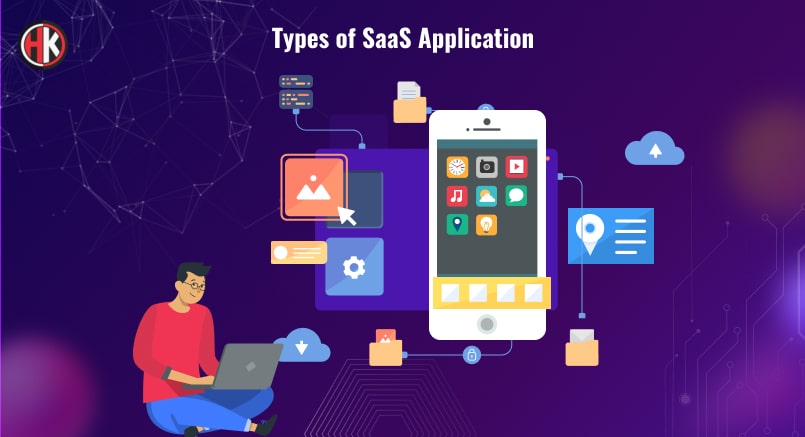
Consumer SaaS products are designed for individual users and include applications such as fitness tracking and personal finance management. Enterprise SaaS services are designed for large organizations and include applications such as ERP and HRM.
CRM software
There are different types of SaaS providers, and each has its benefits. One type of SaaS application is CRM software. CRM software helps businesses manage their customer relationships. It can be used to track customer contact information, sales data, and support requests.
CRM software can also help businesses to automate their sales and marketing processes. However, CRM software can be expensive, and it may require businesses to have a large IT staff to manage it.
Software for Project Management
There are a variety of SaaS platforms available for project management. These applications can be used to track and manage project tasks, deadlines, and resources. They can also be used to create and share project reports and documents. Some of the most popular SaaS products for project management include Asana, Basecamp, and Trello.
eCommerce Platform
There are many different types of SaaS app software available for businesses to use, including eCommerce applications. These apps can help businesses to manage their online sales and customers more effectively.
They can also provide a platform for businesses to sell their products and services online. There are many different eCommerce apps available, and businesses should choose the one that best suits their needs.
There are many different types of eCommerce platforms available in the market today where you can sell and buy products or services. Examples like the Shopify e-commerce platform, Magento, commerce tools, etc.
ERP Software
SaaS ERP is a type of software that helps businesses to manage their operations and resources more effectively. It is a cloud-based software solution that enables businesses to connect and manage all their data and processes in one place. SaaS ERP is designed to help businesses automate their operations, improve their efficiencies, and save time and money.
There are several different ERP software available on the market today. Each software package offers a different set of features and benefits, so it is important to choose the right one for your business needs.
Some of the most popular SAAS ERP applications examples include Odoo ERP, Epicor Kinetic, Oracle NetSuite, Sage Intact, Humble cows, etc.
Payment Gateways and Billing software
One type of software that is becoming increasingly popular is billing software. This is designed to help businesses that manage their billing and invoicing processes and automate many of the tasks associated with billing, including creating invoices, issuing payments, and tracking customer payments. This can save a business a considerable amount of time and money.
There are many different payment gateway and billing software examples available to businesses. Some popular payment gateway providers include Authorize.Net, PayPal, and Stripe. Billing software examples include FreshBooks and Zoho Invoice.
When choosing a payment gateway or billing software, it’s important to consider the needs of your business. For example, if you’re a small business, you might not need all the features offered by a larger provider. Make sure to compare features and prices to find the best fit for your business.
Read More:- UI and UX: What are the Differences and Similarities?
SaaS-Based Collaboration Tools
There are different types of SaaS product software, each of which offers its own unique set of features and benefits. These tools are designed to help users communicate and collaborate in real time.
Some of the most popular collaboration tools include Slack, Discord, Hipchat, Google Hangouts, Google Drives, Microsoft Office 365, and Slack. These tools allow users to easily share documents and files, communicate with each other in real-time, and track projects and tasks.
Now that you have explored various types of SaaS products why not check out another one with ERP-driven software at Hackerkernel?
SAAS Application Created by Hackerkernel
Humble Cows is an ERP-generated SaaS application that gives you all the information and reports about dairy products, food, and FMCG. This JAVA-built app is a fine combination of advanced tech with appropriate UI and friendly UX which can be a revolutionary app for the agriculture and food industry.
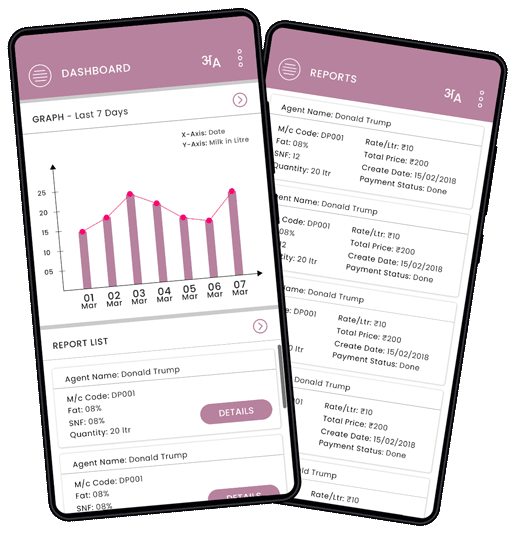
6 Powerful steps to Build a SaaS application from Scratch
Nowadays, the demand for SaaS applications is increasing day by day. To meet this demand, it is important to have a clear understanding of how to build a SaaS application from scratch.
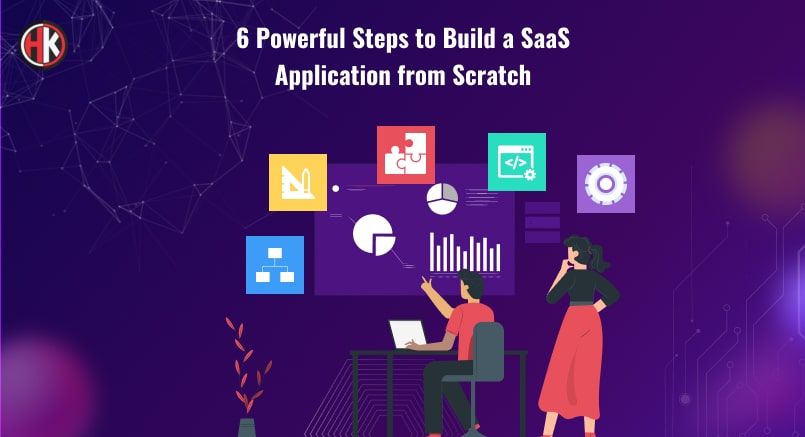
There are a few key steps that need to be followed to build successful SaaS software for your business or startup.
Step 1—Figure out What Problem you will solve
The first step to building a SaaS application is to define the problem you’re solving. What pain point are you trying to address? What need are you trying to meet? The use of the app is to make it useful for the users. Therefore you must interact with your client and ensure what’s the goal and purpose of the app.
App development is an expensive and time-consuming process therefore without understanding the problem all hard work and money are a waste of time, especially during all the competition for Saas apps. Once you’ve identified the problem you’re solving, you can move on to the next step.
Step 2— Do in-Depth Research and Define your Target market
Once you know what problem you’re solving, you need to do your research and figure out what solutions currently exist and how your application can be better. This step is critical to ensure you’re not building something that already exists.
In step 2 you need to create a detailed and comprehensive business plan. This business plan should include a market analysis, a competitive analysis, and a financial projection.
This will create a blueprint for your app and will also help you understand the latest SaaS trends and requirements and the market and how you can use them to the advantage of your client’s application.
After research, you will have identified what is your niche and target audience and for whom you are building the app. For Eg– we create a customized application for a specific audience which gives an advantage of more productivity and quality. This way you don’t waste time catering to everyone and focus on only your niche and respective users for the client.
Step 3—Develop a Unique Value Proposition and a Correct Pricing model
What makes your SaaS application different from all the others on the market? What value will it offer to your target market? Your value proposition should be clear and concise, and it should be the foundation of your marketing efforts. It should have all the features for the interest of the users as per SaaS trends and optimum AI & ML use which make it convenient.
After that, it’s also important to have a proper pricing model keeping in mind the competitor pricing, the market rate, and how you will generate revenue.
You must ensure that your app has all the right pricing features like pay-as-you-use service or making revenue through ads. There should be a proper list of such pricing models to build a successful app for the client.
Step 4 — Select what are your Important Features
After your competitor analysis, you know what features are absent in their product that your SaaS app can cover. This way you can have the competitor’s edge. There should be broadly two kinds of features in your app–
- Must-Have Features
- Additional features
There are a few important features to consider when developing a SaaS app for your business. First, you’ll want to make sure that the app is compatible with your existing systems and infrastructure.
Secondly, you’ll want to consider the app’s scalability and ability to grow with your business. Thirdly, you’ll want to evaluate the app’s security features and ensure that your data will be safe and secure.
Finally, you’ll want to consider the app’s support options and make sure that you’ll be able to get help when you need it. When it comes to additional features you can go for some unique features that become the USP of your client’s app. Some add-on characteristics can include-
- High availability for the client anytime anywhere.
- A subscription-based billing as per the convenience of the user.
- Multi-user SaaS product where multiple customers can use the app at the same time.
- Easy & Single Sign-in.
Apart from these must-have features, your client’s SaaS product calls for some unique features that attract the user to exclusively use your app.
Step 5— Choose the Technology Stack & Application design
There are a few things to keep in mind when choosing the right technology for your Saas app. The first is to make sure that the technology is scalable. This means that it can handle an increase in users and data without breaking down. The second is to make sure that the technology is secure.
This means that it has robust security measures in place to protect your data. Finally, you want to make sure that the technology is easy to use.
So, when it comes to building a SaaS app, there is a need to choose the right tech stack from using a traditional web development stack or using a cloud-based development solution. And this tech stack must be able to support:
- The Back-end server of the web with programming languages like SQL, Java, and Python makes your app more readable and flexible.
- Front-end server where we deal with multiple graphics, links, and page elements, best languages and technology suggested are HTML, CSS, and Vue. Js.
- Databases are an important feature for storage and efficiency and many developers use tools like MySQL, MongoDB, and many more.
- Cloud hosting Platforms
Step 6— App Launch & Post Launch Maintenance
Once the product is built, it will need to be thoroughly tested to ensure that it is stable and performs as expected. This testing process can be lengthy and complex, but it is essential to ensure that your SaaS app is ready for launch.
Finally, it is important to continuously monitor and improve your application based on user feedback. After the app is launched it’s important to keep track of the performance of the app and check for any errors.
It should also be updated from time to time to add important updates according to market trends. By following these steps, you will be well on your way to building a successful SaaS application from scratch
Read: More- Tips to Hire Front-end developers for your project in 2023
What’s the Cost to Build a SaaS Software?
The cost of SaaS application development can vary depending on many factors, such as the size and complexity of the software, the number of features included, and the amount of customization required. Of course, the actual cost will also depend on the specific needs of the business in question.
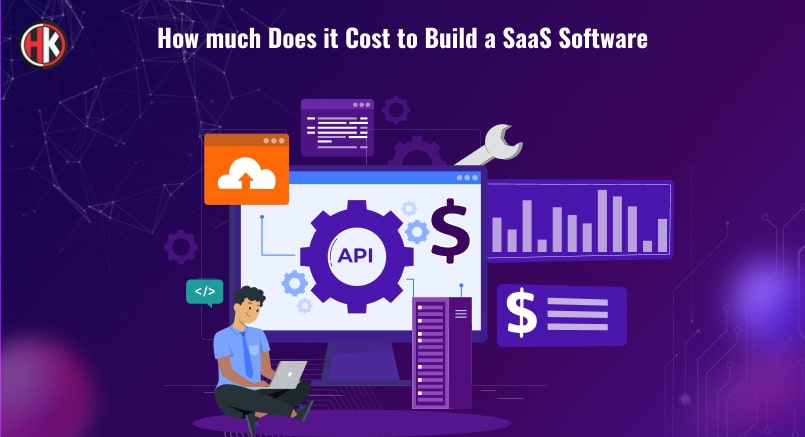
Final Thoughts
Now that you have a basic understanding of what it takes to build a SAAS app, you can confidently build your application and create a successful SAAS business.
If you are looking for a team to help you design and build your SAAS app, or you need help with your SAAS app marketing strategy, Hackerkernel is the place for you. Here you get end-to-end SaaS products.
The SaaS application development services at Hackerkernel can change your customer experience and enhance your business operations several notches higher.
With a team of efficient and dedicated developers, we offer fast performance, the latest technology, scalability, after-sales support, on-time delivery, and SaaS Consulting. So, be assured of a top-notch & high-functioning SaaS product for a promising user experience.
FAQ
- How to Build a SaaS Product?
There are a few key things to keep in mind when building a SaaS product: keep your target market in mind and ensure your product is scalable along with competitive pricing. The security and usability of the product are also very important when you develop an app.
2. What is the SaaS Product Cycle?
The SaaS product cycle is the process of creating, delivering, and managing a software product as a service. The cycle includes four main phases: ideation, development, delivery, and management.
3. What programming language is used to build SaaS Products?
There are a variety of programming languages that can be used to build software-as-a-service (SaaS) products. The most popular languages for SaaS development are Java, Python, and Ruby on Rails. However, several other languages can be used as well, including PHP, Node.js, and Go.
4. How is SaaS different from Web applications?
The vast majority of web applications are delivered as a service, known as Software as a Service (SaaS). SaaS applications are majorly hosted by the provider and used by users through a web browser. In contrast, traditional web applications are typically installed on a server and accessed by users via a web browser.
5. What are the Tools of SaaS Development?
There are a few tools that are commonly used in the development of software-as-a-service (SaaS) applications. These include
- A web application framework
- A database
- A web server
- A web development environment

Husain Saify
Founder & CEO
Hey, I am Husain Saify, the Founder and CEO of Hackerkernel. I like to share some valuable information about Industry. You can also Reach Out to me On Linkedin.hello@hackerkernel.com

